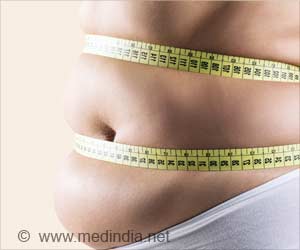An overweight or obese woman when delivering vaginally, the risk of overweight in her child is three times higher, and when giving birth via cesarean-section (C-section), the risk is five times higher than usual.

‘Lachnospiracae bacterium influences the relationship between maternal weight during pregnancy and child's weight following vaginal and cesarean birth.’





"What our study showed is that both the type of infant delivery, vaginal birth versus cesarean section birth and changes in gut bacteria are also involved."The New CHILD Study research published in JAMA Pediatrics, found that when an overweight woman delivered vaginally, the risk of overweight in her child was three times higher than normal. But the risk was five times higher than normal when the woman delivered via cesarean-section (C-section). This association persisted even after adjustment for multiple other factors.
"There seemed to be something about a C-section that increased the risk of childhood obesity," observed Kozyrskyj, senior author of the study and one of the world's leading researchers on the gut microbiome, the community of microorganisms or bacteria that live in the digestive tracts of humans.
"We have shown in our previous research that an infant's gut microbiome is influenced by the type of delivery, so we wondered if this effect could be associated with obesity risk in early childhood."
To investigate further, Kozyrskyj and her research team studied over 930 mothers and their infants participating in AllerGen's CHILD Study, a national population-based birth cohort.
Advertisement
An older analysis method not used in microbiome analyses sequential mediation was employed. The children's weights were assessed at one and three years of age.
"Given that infant overweight and obesity are a major public health problem, our results reinforce increasing concerns over rising cesarean deliveries and affirm the role of the gut microbiota as a 'super organ' with diverse roles in health and disease," added Kozyrskyj.
Source-Eurekalert















